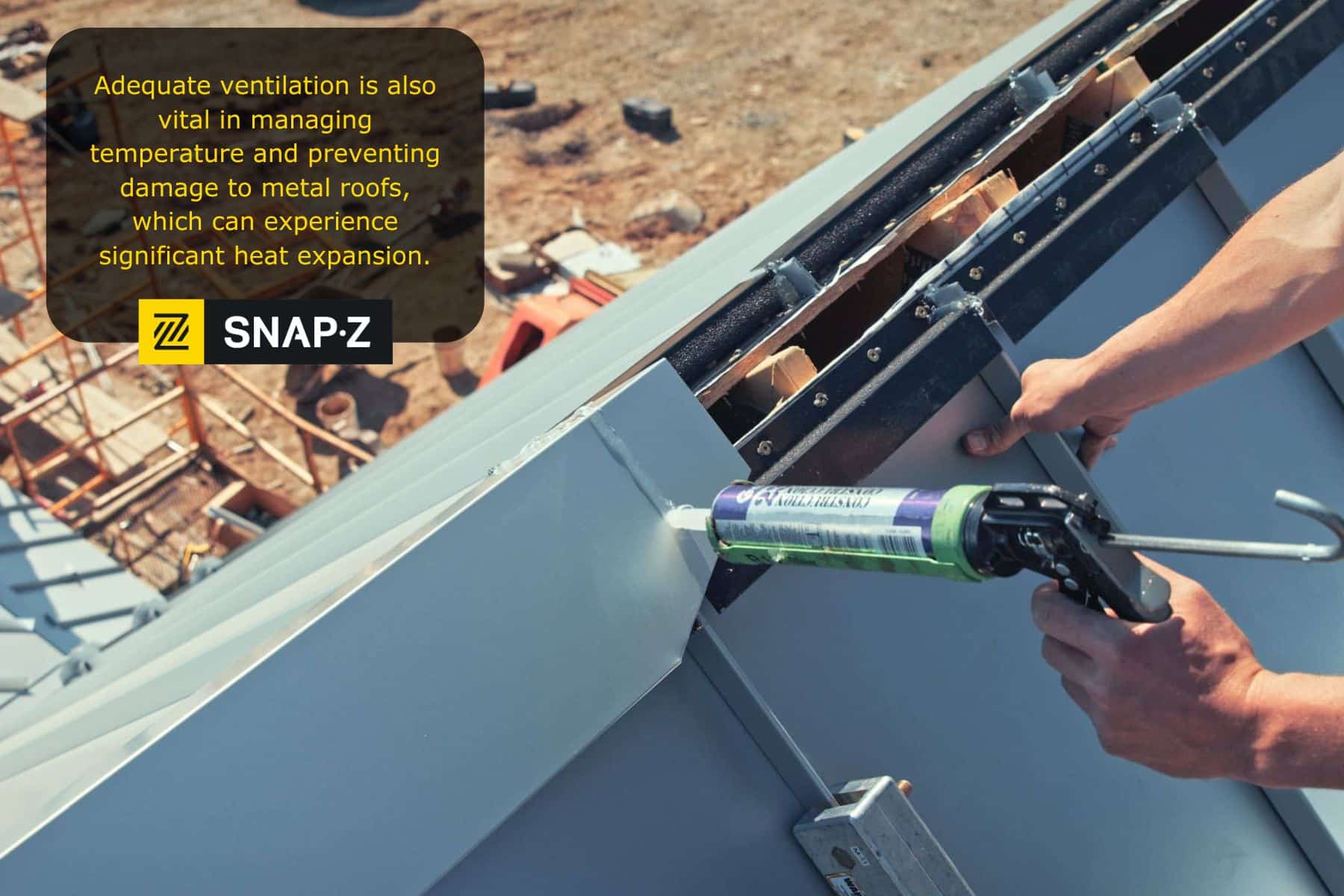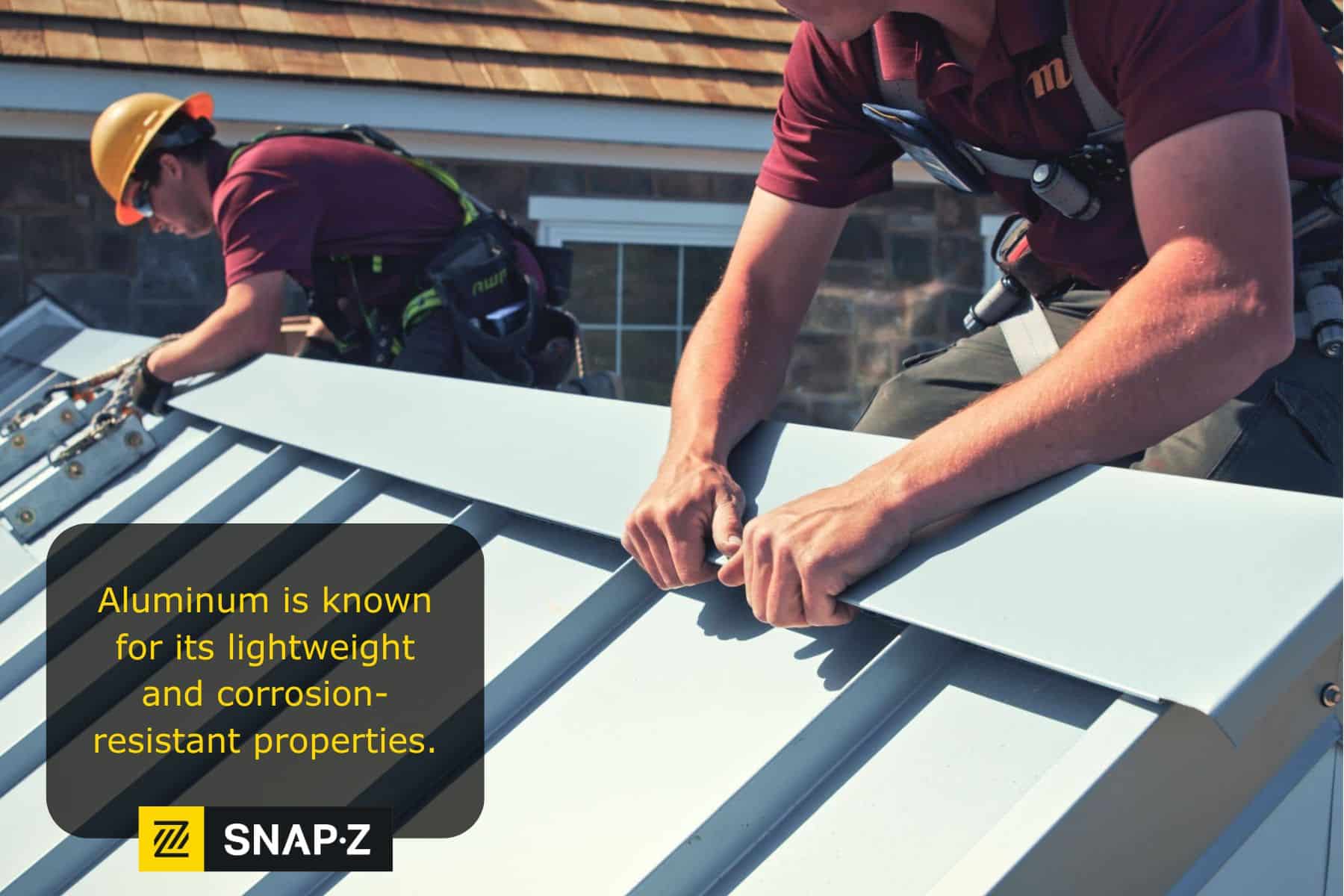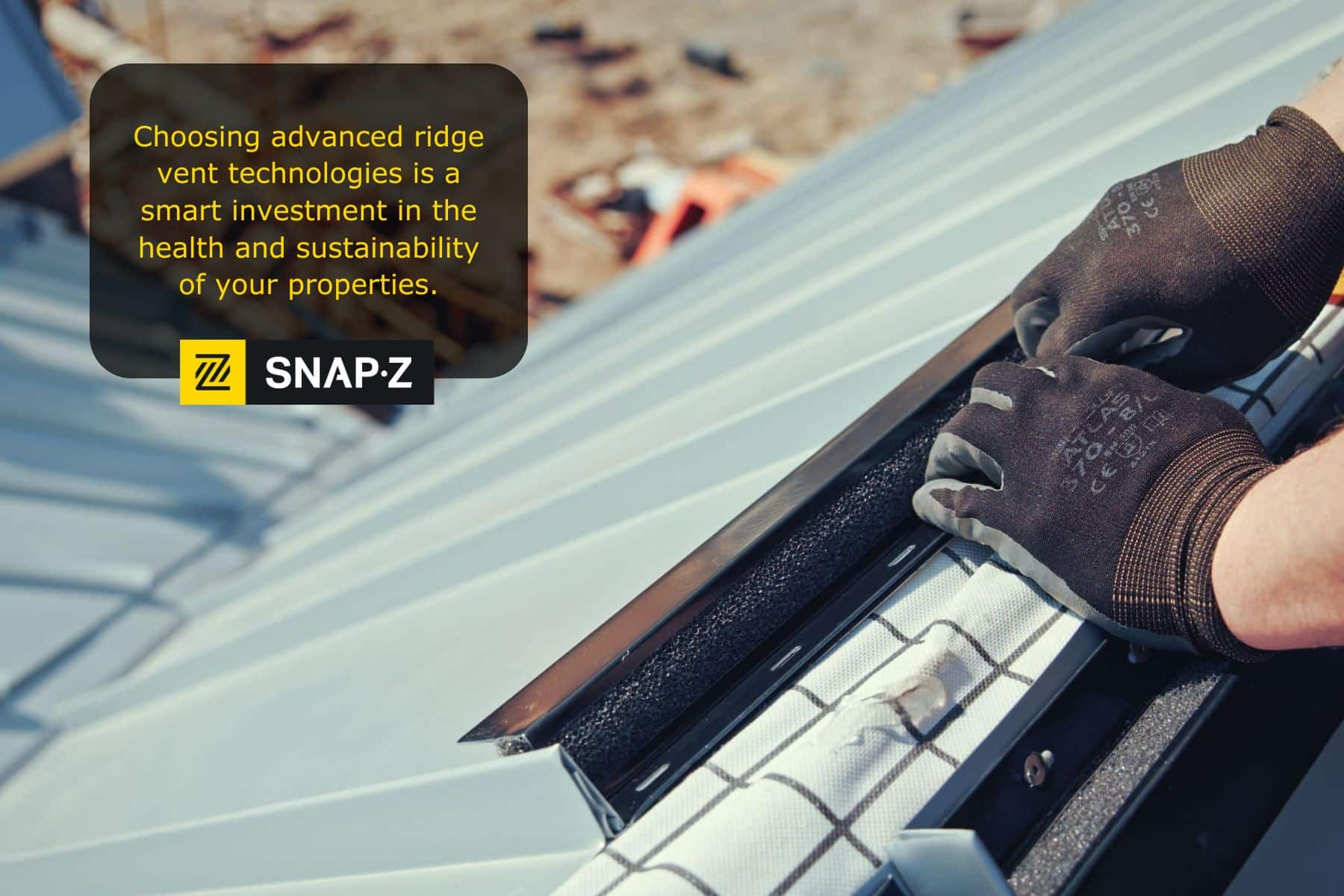Breathing New Life into Roofs: The Future of Ridge Vent Technology for Metal Roofs
In the world of construction and roofing, staying ahead of technological advancements is not just beneficial; it's essential. Particularly in the context of metal roofing, one innovation that's drawing considerable attention is the evolution of ridge vent technology.
Metal roofs are the rage these days, and for good reasons: they last forever, save on energy bills, and are pretty kind to the planet.
But here’s the thing:
All that goodness falls apart if your attic turns into a sauna or an icebox. That's where ridge vents and proper ventilation come in.
Ridge vents might not get the limelight in home improvement shows, but they're critical to the health of your home. These vents allow hot, moist air to escape your attic, maintaining a cool and dry environment. For metal roofs, which can act like sunbathers soaking up the heat, adequate ventilation isn't just nice to have; it's essential!
In this guide, we'll explore the innovations shaping ridge vent technology while maintaining an objective viewpoint on industry advancements. We promise it's cooler than it sounds!
The Unsung Heroes of Metal Roofs
To get started, we have to answer a very basic question: is ridge vent for metal roofing really that important?
As we’ve already alluded to, it most certainly is. But let’s dig a little deeper and understand why the ridge vent is your roof's real hero.
As we already mentioned, ridge vents are vital to ensuring adequate attic ventilation, which is crucial for a building's overall health and efficiency. In short, they allow hot, moist air to escape from the attic.
Why does this matter?
A dry, well-ventilated attic reduces the risk of moisture accumulation, which can lead to mold growth, wood rot, and reduced insulation effectiveness. On the other hand, an attic that collects moisture is in danger for all of the above.
Adequate ventilation is also vital in managing temperature and preventing damage to metal roofs, which can experience significant heat expansion.

The Evolution of Ridge Vent Technology
Over the years, ridge vent technology has evolved significantly. Initially, these vents were simple in design, focusing merely on providing an outlet for hot air. However, as our understanding of ventilation, energy efficiency, and building science has grown, so has the demand for ridge vent technologies. Today, these systems are designed not only to improve air flow but also to enhance weather resistance, installation efficiency, pest protection, and overall roof durability.
Design innovation is at the heart of the latest ridge vent advancements. Modern vents are engineered to maximize airflow efficiency, employing aerodynamic shapes and internal baffles that facilitate the movement of hot air out of the attic while preventing rain, snow, and debris from entering.
SnapZ's ridge vents, for example, feature a unique design that ensures optimal airflow and weather protection, even in extreme conditions. These advancements are critical in both warm and cold climates, where adequate ventilation can significantly impact heating and cooling costs.
Beyond that, some modern ridge vents are packaged and prepared to make installation very easy. SnapZ’s pre-punched fasteners, pre-cut lengths, and pre-applied butyl tape are just one example in the industry.
New Materials Making a Difference
Manufacturers are now using advanced materials to construct ridge vents. Traditional plastic and metal materials are being supplemented or replaced by high-tech composites and engineered plastics that offer superior durability, UV resistance, and flexibility. Aluminum, known for its lightweight and corrosion-resistant properties, has become a popular choice, especially in high-end products like SnapZ's ridge vents. These materials ensure that the vents can withstand harsh weather conditions, from blazing sun to freezing snow, without degrading.

Designing for the Future
The innovations in ridge vent technology directly contribute to improved ventilation efficiency. By optimizing the design and materials used, these modern vents can significantly enhance the airflow through the attic, effectively reducing heat and moisture buildup. This improvement in ventilation efficiency is essential for maintaining the structural integrity of the roof and the overall health of the building, ensuring that it remains cool in the summer and dry in the winter.
Innovative Installation Methods
Ease of installation is another area where ridge vent technology has seen remarkable progress. New methods and designs allow for quicker, more straightforward installation, reducing labor costs and minimizing the risk of errors. SnapZ ridge vents are a prime example of this, designed to be easily installed without the need for extensive cutting or custom fitting. This not only speeds up the installation process but also ensures a more secure and effective fit, crucial for long-term performance and durability.
Boosting Durability and Lifespan
Technological advancements in ridge vents have also improved durability and lifespan. The use of new materials and designs not only improves the immediate performance of these vents but also ensures that they can endure the rigors of harsh weather conditions over time. Innovations in materials like the ones used in SnapZ ridge vents mean that they are less likely to crack, fade, or degrade, thereby extending the life of the roofing system and reducing the need for repairs or replacements.
Real-Life Examples and Benefits
Seeing these innovations in action underscores their value. For instance, buildings equipped with advanced ridge vents like those from SnapZ have reported significant improvements in attic ventilation, leading to lower cooling costs, reduced moisture problems, and prolonged roof life. These real-life examples highlight the tangible benefits of adopting new ridge vent technologies, from enhanced building comfort and efficiency to lower maintenance costs.
The Tangible Benefits of New Technologies
The cumulative effect of these technological advancements in ridge vent systems is profound. By improving airflow, enhancing weather protection, simplifying installation, and extending durability, these innovations directly impact the efficiency and longevity of roofing systems. For builders, contractors, and homeowners alike, the adoption of advanced ridge vent technologies like those offered by SnapZ represents a smart investment in the health and sustainability of their properties.

CONCLUSION
In conclusion, the innovations in ridge vent technology for metal roofs are setting new standards in the construction and roofing industry. While products like SnapZ ridge vents are leading the charge, the overall trend toward more efficient, durable, and easy-to-install ridge vents is a win for everyone involved. As these technologies continue to evolve, they promise to deliver even more significant benefits.
If you found this blog helpful, you might also enjoy these articles:
- 5 Ways a Quality Standing Seam Ridge Vent Helps Contractors Win
- 6 Common Ridge Vent Problems Every Informed Homeowner Should Know About
- 4 Reasons You Need Snap-Z Metal Roof Ridge Vent
SnapZ is a metal roofing company based in Lancaster County, PA. Their unique metal ridge vent design allows for efficient, precise installation and fewer maintenance issues when installing standing seam metal roofs.
Get a quote today to see how their metal ridge roof vent could make you more efficient!






